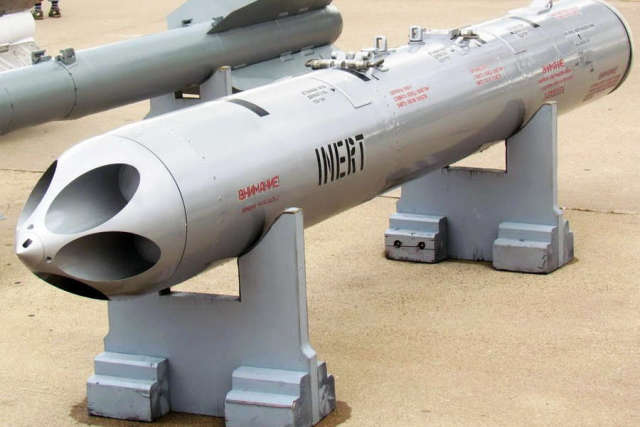Doctor of Military Sciences Valintin Karpov told how the Tulumbas missiles work
In the list of high-precision weapons used by the Aerospace Forces aviation during a special operation in Ukraine, the Russian Defense Ministry named the S-13 Tulumbas ammunition - an unguided missile, the power of which allows you to break reinforced concrete shelters. Inside the rocket is 15 kilograms of TNT. "Newspaper.Ru" together with experts, I understood the features of an aircraft projectile.
The name "Tulumbas" was given to the S-13 rocket in honor of a percussive musical instrument, which is a kind of timpani. The S-13 has a 122-mm caliber and is capable of inflicting a powerful defeat on the enemy on the ground. The penetration capacity is 6 meters of buried fortifications and 1 meter of reinforced concrete.
The Russian Defense Ministry demonstrated launches of "Tulumbas" from Su-25 attack aircraft at extremely low altitudes. Judging by the video, the missiles went towards the targets and successfully hit them.
"The peculiarity of the Tulumbas-type missiles lies precisely in their power. This is such an armor-piercing projectile. In this case, the projectile is reactive. Its caliber is comparable to an artillery shell, but the power is much higher. He is guaranteed to destroy reinforced concrete shelters," he told the newspaper.Ru" military expert, reserve Colonel Yuri Gavrilov.
The rocket was developed at the Institute of Applied Physics in Novosibirsk in 1978 and is produced by I.I.Toropov GosMKB Vimpel JSC.
"The reason for the appearance of this missile is the analysis of military conflicts in the late 1960s and the first half of the 1970s of the XX century in the Middle East. They demonstrated to the whole world that the previous approaches to the issues of basing and masking aircraft at military airfields are a thing of the past.
The first developed base rocket was submitted to state tests in 1979 together with the universal unit of the UB-13 guns," he explained to the Newspaper.En" Doctor of Military Sciences Valentin Karpov.
Arched shelters have shown their high reliability, and since 1975, the NATO command has been equipping all its military airfields with exactly this type of shelters. Thus, initially the C-13s were intended for attacks on Alliance airfields.
Valentin Karpov added that these missiles were developed relatively long ago, but until now they have not been actively used. They were used in a limited way during the war in Afghanistan, there were isolated cases of their use during two Chechen companies when it was necessary to destroy underground militant points.
"Every weapon, every ammunition has its own purpose. "Tulumbas" is not an ordinary missile, it has a great striking ability, respectively, and a special application - for point targets, with maximum power effect. Intelligence data is of great importance in order to hit exactly the target that is a priority. Somewhere it is possible to work out ATGMs, somewhere to use hypersonic "Daggers", and here, as you can see, the "Tulubas" turned out to be effective," the newspaper reported.En" retired Major General Vladimir Popov.
The S-13 missile has a number of modifications. During the operation in Ukraine, the last of them was used - S-130FS-1 (high-explosive fragmentation). The use was demonstrated from Su-25 attack aircraft. These missiles can also be used by Su-30SM fighters and attack helicopters.
"The S-13 is a universal weapon. Theoretically, they can be put on any plane and helicopter. At the same time, you can't hide from them. These missiles open any bunker. Another thing is that the C-13 does not have a long range. Depending on the modification, it can be from 2 to 5 km. Therefore, the combat vehicle that uses them must come very close to the target. This requires a very high level of skill from pilots," Karpov explained.
Viktor Sokirko

